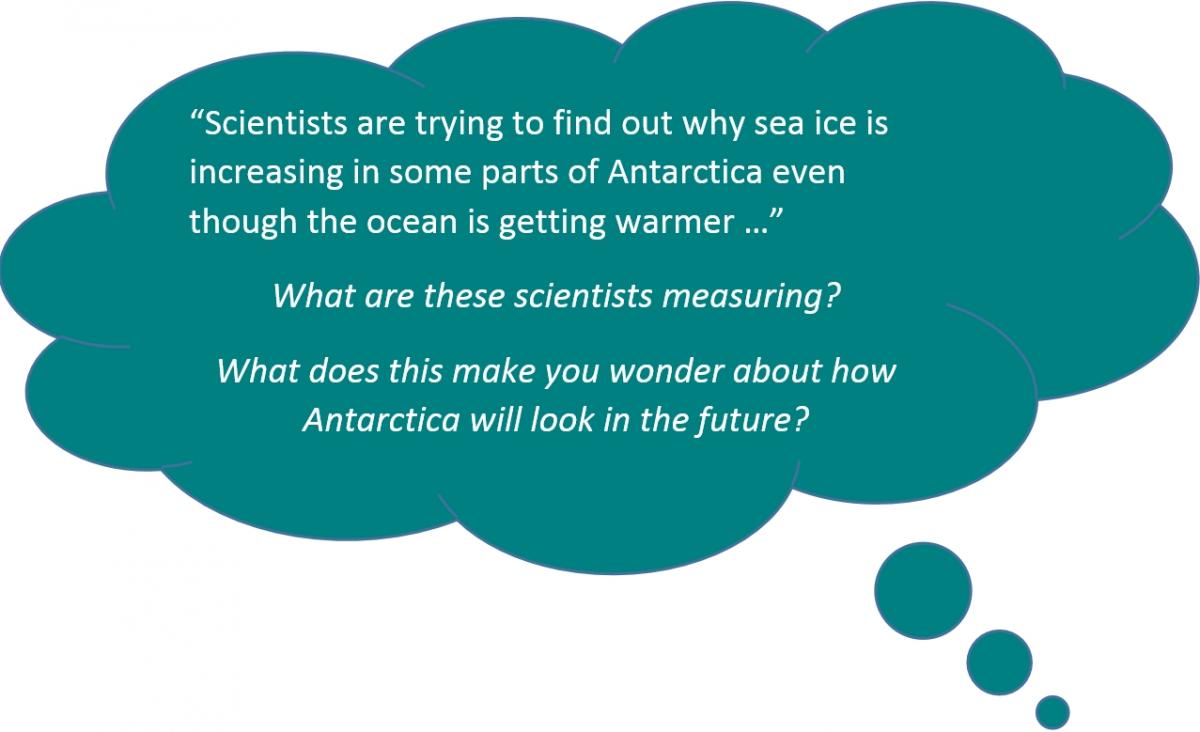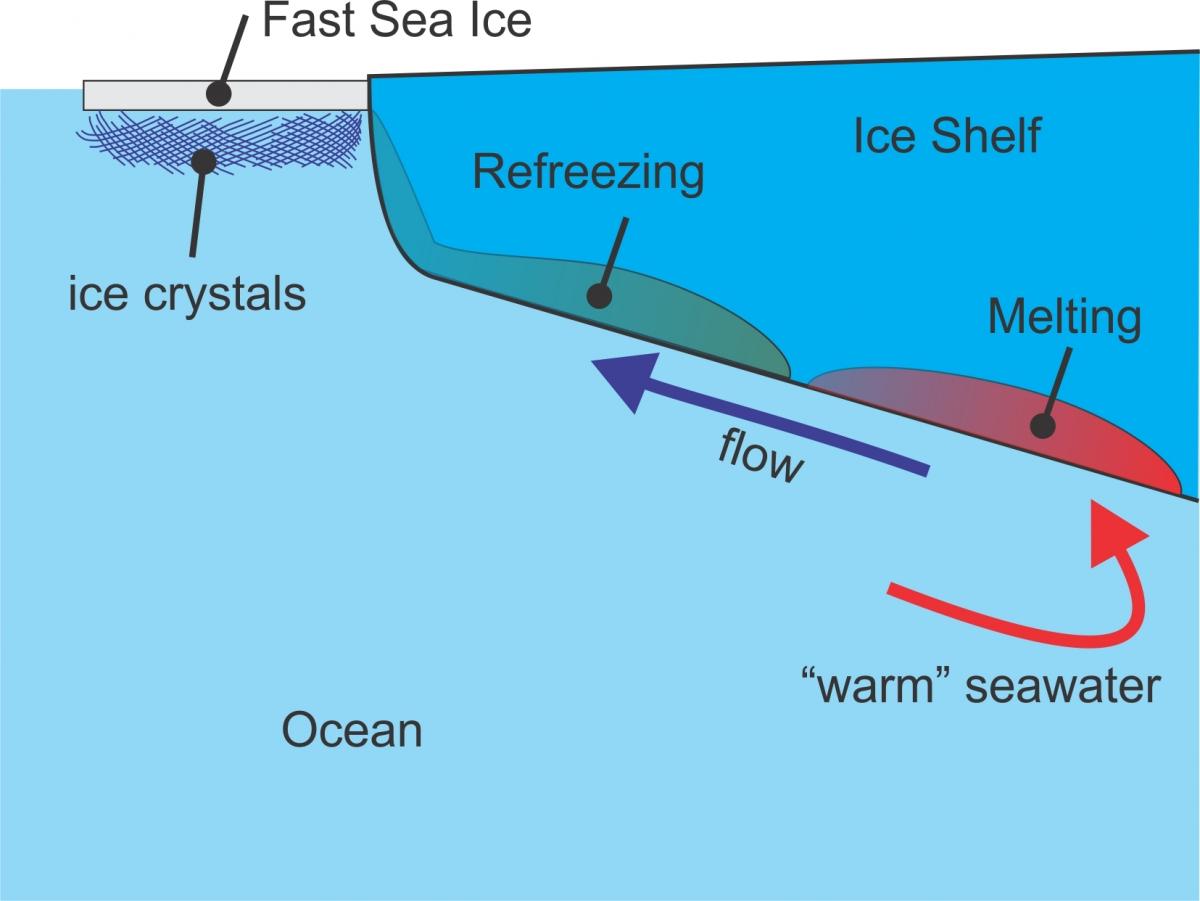Scientists are trying to find out why sea ice is increasing in some parts of Antarctica even though the ocean is becoming slightly warmer.
Part of the answer to this puzzle lies in the effect that the warming ocean is also having on Antarctic ice shelves – the floating extension of the land-based ice sheet.
Melting of ice shelves by the ocean creates water that becomes supercooled as it rises towards the surface. This very cold water contributes to thickening of sea ice, especially near the coast.
Why is the area of sea ice around Antarctica increasing? 
While the total area of sea ice is increasing, it varies from region to region. This is not a surprise as the ocean around Antarctica also varies.
Changing winds are thought to be influencing ice growth in some regions.
The K131 science team are interested in how ice shelves and the ocean affect each other. Ice shelves are made of fresh water so when they melt they release very cold, fresh water into the sea.
This water is so cold it can be below its freezing point, yet it still is a liquid – this water is called supercool. This supercool water tries to form new ice. As this water refreezes it forms ice crystals.
It is possible that the current pattern of increasing growth of sea ice over winter in Antarctica is partly caused by the melting of the ice shelves. One form of ice is being replaced by another.
What the scientists will be working on
NIWA scientists have been working in Antarctica to try and understand the processes controlling the growth of sea ice in parts of Antarctica. During the field trip you will meet Dr Natalie Robinson who will be looking at how ice crystals grow and group together in supercooled water. Natalie will then test how the ice crystals below sea ice affect the movement of water and the way heat is transferred in the upper ocean.

Measurements and observations will be collected on;
- Supercooled water
- Temperature
- Salinity
- Turbulence (movement of water)
- Ice crystal formation.
By collecting this data, scientists hope to find more accurate information about changes in the ice shelf and sea ice. This research will provide new information that can be fed into climate models making these models more accurate. By improving climate models scientists will better be able to show what the future climate will be like.










